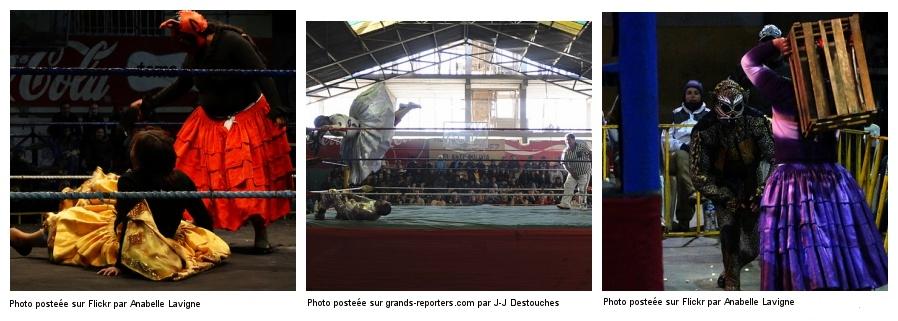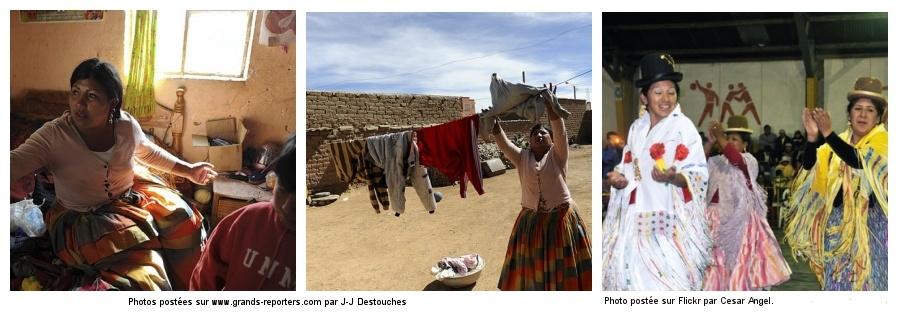
La Paz, the highest capital city in the world, is home to the luchadoras cholitas who are very popular and have had great success. These Aymara women (western Bolivia indigenous people), dressed in their most beautiful traditional clothing, fight in the wrestling ring. They compete against masked opponents who have no chance to win even a single round, and the referee takes part on either the good side or the bad. The stars of Mexican or US wrestling inspire these fighters.
More and more people are attracted to this cholita wrestling every year by the combination of burlesque show and authentic sports performance.
Training and fighting:
Wrestling imposes an intensive daily training routine on its participants: they practice keys, choreography and staging for the show. The wrestlers train together without rivalry: they support and encourage each other to improve. Outside the show, these women train extensively with aerobic and combat exercise, because wrestling is a very physically demanding sport. Male wrestlers admit that these women have a stronger resolve than they do to achieve success. They say that their success is due to the novelty and originality of this phenomenon as well as their involvement and determination.
These matches take place every Sunday in an arena in the Andean city of El Alto, next to the city of La Paz. Bolivians say that they are the highest fights in the world, referring to the altitude of El Alto, and they like to brag about these women's strength and endurance. Many foreign and local tourists of all kinds go every week to see these extraordinary women.
The wrestling show is a battle between " good and evil:" a metaphor for daily life where one must fight and make sacrifices. Each representation is based on a well-timed drama. Men and women take part in preparing the shows. The men have names like "Satanator," "God's creature," "God," "The Savage." They are in the ring, but they always lose to the women. Since Bolivian society is quite male dominated, this sport tries to show that women are equal and even better than men, that they can overcome them in some situations. However, there is no rivalry among them: both men and women are unified and make up a close family that promotes a message to the Bolivian people.
The fighters receive the highest pay, depending on their standing in each fight: the women earn more when they perform their shows in neighboring countries. Wrestling is a way for them to let loose and have hope for their future and their children's futures.

Wrestling: More than a sport, a battle for the emancipation of Bolivian women:
The cholita wrestling began taking place in Bolivia in the 80s when women came from the country to the city. Looking for work and faced with the historic machismo of Bolivian society, these women have tried to impose their status and ideas through this sport which was a field reserved for men.
The fighting cholitas do not get into the ring only for the show or the money: they fight every day for the emancipation of the Bolivian woman.
Mothers, waitresses, students of all ages, the fighting cholitas, with names like "Black Beard" or "Bolivian Saint," have had to deal with preconceived ideas and their relatives in order to impose their will to join the world of wrestling. They want to show their strength and power through this sport while defending their origin, dressing in the traditional costume of the Aymara woman.
Now, they want to use the consideration and support of Bolivian authorities that accompany this social phenomenon, demonstrating a sincere concern for the position of women in Bolivian society today.
Besides sending a message for women's rights in Bolivia, the wrestlers become involved in civil society, participating in events to build schools, hospitals, etc.
The willpower of these women is applied not only in the ring, but in real life. The bouts of these cholitas are a unique show in the world, which impresses everyone who sees it.


